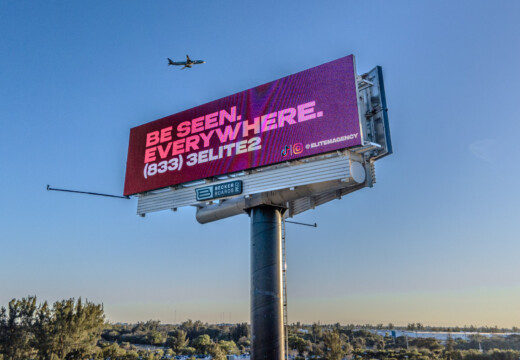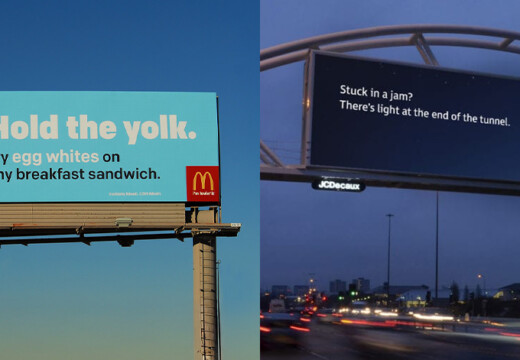- Cost Per Thousand Impressions (CPM): Measures the cost to reach 1,000 viewers. Formula:
(Ad Spend ÷ Impressions) × 1,000. Lower CPM means better value for audience reach. - Cost Per Click (CPC): Tracks the cost of each interaction with your ad. Formula:
Ad Spend ÷ Clicks. Helps evaluate ad engagement and adjust creative or targeting. - Total Impressions: Counts how often your ad is displayed. Higher impressions can mean better reach and cost efficiency.
- Return on Ad Spend (ROAS): Shows how much revenue your ads generate per dollar spent. Formula:
Revenue ÷ Ad Spend. High ROAS indicates effective campaigns. - Cost Per Acquisition (CPA): Calculates the cost of gaining a new customer. Formula:
Ad Spend ÷ New Customers. Lower CPA reflects more efficient customer acquisition.
Quick Overview of Metrics
| Metric | What It Measures | Formula | Why It Matters |
|---|---|---|---|
| CPM | Cost to reach 1,000 viewers | (Ad Spend ÷ Impressions) × 1,000 |
Compare costs across locations |
| CPC | Cost per viewer action | Ad Spend ÷ Clicks |
Tracks ad engagement efficiency |
| Total Impressions | Number of ad displays | Traffic × Duration × Visibility | Measures campaign reach |
| ROAS | Revenue per dollar spent | Revenue ÷ Ad Spend |
Assesses profitability |
| CPA | Cost per new customer | Ad Spend ÷ New Customers |
Tracks acquisition efficiency |
Use these metrics to track performance, adjust spending, and improve ROI. Platforms like Blip make it easy with real-time data, pay-per-play pricing, and tools to optimize campaigns starting at just $20/day.
Can You Measure Billboard ROI? Yes, Here’s How!
What Makes Billboard Advertising Cost-Efficient
Maximizing your budget while reaching a broad audience is the key to cost efficiency in digital billboard advertising.
“Billboards are one of the most impactful ways to advertise, and with Blip, you spend a fraction of what you would end up paying elsewhere.” – Ray Bowens, Founder, Hashtag‑Vape
Modern digital billboard platforms help stretch your dollars further by offering:
- Real-time performance tracking: Keep an eye on campaign metrics and adjust spending as needed.
- Pay-per-play pricing: Only pay for the ads that are actually displayed, reducing unnecessary costs.
- Location-based tools: Use an interactive marketplace to choose billboard locations based on data-driven insights.
Up next, we’ll dive into the five metrics that measure these efficiencies.
1. Cost Per Thousand Impressions (CPM)
Let’s start with measuring the cost of reach using CPM.
Cost Per Thousand Impressions (CPM) is a key metric for assessing the efficiency of billboard advertising. It tells you how much you’re spending to reach 1,000 viewers, making it simple to compare the effectiveness of different locations and campaigns.
The formula is straightforward: CPM = (ad spend / impressions) × 1,000. For example, if you spend $500 and get 100,000 impressions, your CPM is $5.00.
Blip’s marketplace makes it easy to compare CPMs and find the best balance between cost and audience reach. Plus, Blip updates bids every 10 minutes, adjusts CPM based on demand, and provides real-time performance tracking to help you make informed decisions about placement and timing.
2. Cost Per Click (CPC)
While CPM looks at how many people see your ad, Cost Per Click (CPC) focuses on how much you’re paying for each interaction. It tells you the cost of every click on your digital billboard’s call to action. The formula is simple: CPC = ad spend ÷ clicks. For example, if you spend $200 and get 400 clicks, your CPC would be $0.50.
Monitoring CPC gives you insight into how well your ad is engaging viewers. It also helps you make adjustments to your creative or targeting to reduce costs. With Blip’s live performance data, you can compare CPCs across different locations and tweak bids every 10 minutes to get clicks at the most efficient price.
sbb-itb-2e2e93f
3. Total Impressions
Total impressions show how many times your ad is displayed. Blip’s interactive marketplace tracks this data in real time, making it easier to adjust your placements and budgets to get the most reach for the least cost. Combine this information with your CPM data to spot the locations that offer the best reach for your money.
4. Return on Ad Spend (ROAS)
ROAS helps you understand how your ad views translate into actual revenue. It goes beyond just tracking reach and engagement by showing the revenue generated for every dollar spent on billboard advertising.
The formula is simple: ROAS = revenue from billboard ads ÷ total ad spend. For instance, if you spent $1,000 on billboard ads and made $5,000 in sales attributed to those ads, your ROAS would be 5:1. In other words, you earned $5 for every $1 spent.
Several factors can influence your ROAS, including the timing of your campaign, how visible the billboard is, the quality of the design, the clarity of the call-to-action (CTA), and how well the ad resonates with your target audience.
To improve your ROAS:
- Track both direct and indirect conversions from your ads.
- Experiment with different designs and locations during high-traffic times or seasons.
- Adjust your spending based on what’s working best.
“Blip brings exposure and sets us apart”, says Kimberly Pinkson.
Up next, we’ll dive into Cost Per Acquisition (CPA) to see how much you’re spending to gain each new customer.
5. Cost Per Acquisition (CPA)
CPA works hand-in-hand with ROAS, giving you insight into how much it costs to bring in a new customer.
Cost Per Acquisition (CPA) tells you the price of gaining each new customer through your billboard ads. The formula is simple: total ad spend ÷ number of new customers acquired. For instance, if you spend $2,000 on a billboard campaign in a month and attract 40 new customers, your CPA is $50 per customer.
When analyzing billboard CPA, keep these factors in mind:
- Set a clear attribution window to understand when customers convert.
- Compare CPA with customer lifetime value (CLV) to ensure long-term profitability.
- Benchmark CPA against industry norms for a realistic perspective.
- Account for seasonal changes in traffic patterns and conversion rates.
Want to lower your CPA? Here are some tips:
- Experiment with locations: Invest in billboards that consistently yield lower costs per customer.
- Fine-tune targeting: Choose placements that connect with your ideal audience.
- Improve your call-to-action: Make it simple for people to take the next step.
- Track across channels: Understand how billboards support your broader marketing strategy.
Always evaluate CPA alongside ROAS. If your CPA drops over time, it’s a clear sign your campaign is becoming more efficient.
Metrics Quick Reference Table
Here’s an overview of key metrics to measure the cost efficiency of billboard advertising:
| Metric | Definition | Formula | Primary Use | Cost Efficiency Impact |
|---|---|---|---|---|
| CPM (Cost Per Thousand Impressions) | The cost to reach 1,000 viewers | (Ad Spend ÷ Impressions) × 1,000 | Compare costs across billboard locations | Highlights locations offering better value for audience reach |
| CPC (Cost Per Click) | The cost for each viewer action | Ad Spend ÷ Number of Tracked Actions | Measure direct response effectiveness | Shows how well your budget converts to actions |
| Total Impressions | The number of potential views | Traffic × Duration × Visibility | Evaluate campaign reach | Higher impressions often mean better cost efficiency |
| ROAS (Return on Ad Spend) | Revenue generated per dollar spent | Ad-Driven Revenue ÷ Ad Spend | Assess campaign profitability | Indicates how efficiently your investment generates returns |
| CPA (Cost Per Acquisition) | The cost to acquire each customer | Ad Spend ÷ New Customers | Track customer acquisition efficiency | Lower CPA reflects more cost-effective customer acquisition |
These metrics help pinpoint where your budget delivers the most impact. Use this table to benchmark and fine-tune your campaign performance.
Next Steps
It’s time to put these metrics into action and fine-tune your campaigns using Blip’s marketplace, which provides tools for real-time tracking and bidding.
Here’s how to get started:
- Begin with a $20/day budget to test different locations while keeping an eye on CPM and total impressions.
- Regularly check your dashboard for emerging trends and patterns.
- Adjust your bids every 10 minutes to lock in the best CPM rates possible.
- Keep a close watch on ROAS (Return on Ad Spend) to ensure every dollar contributes to revenue growth.
- Leverage CPA (Cost Per Acquisition) data to refine your targeting strategy and reduce acquisition costs.


